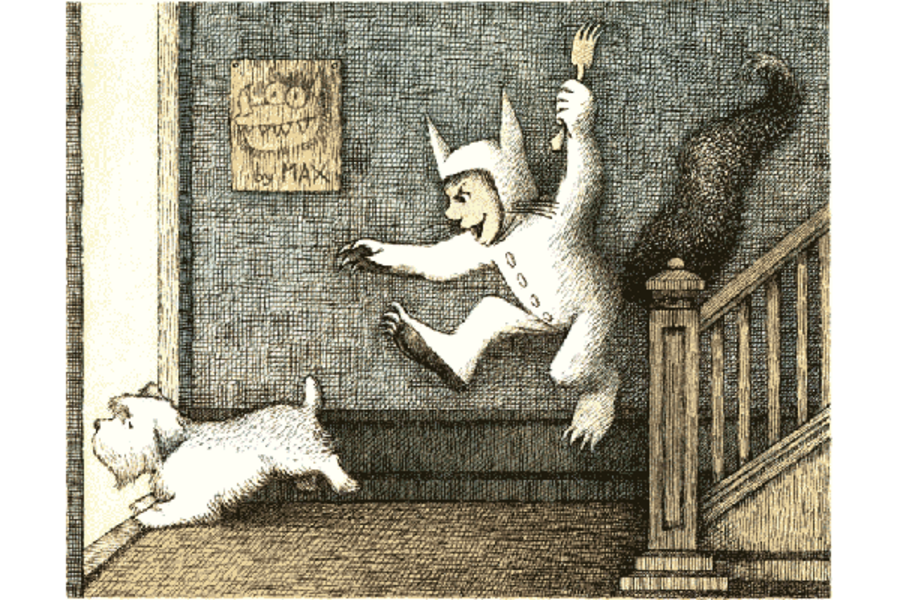Did you spot the three Maurice Sendak books in Google's doodle?
Monday's Google Doodle pays tribute to Maurice Sendak, the children’s book author and illustrator who revolutionized the genre by portraying both fairytales and nightmares. For Sendak, dealing with both good and evil was a way to make his two dimensional illustrations portray the emotions of the real world.
“Children do live in fantasy and reality; they move back and forth very easily in a way we no longer remember how to do,” Sendak said in an interview with Virginia Haviland in 1972.
Mr. Sendak, who died in May last year, would have been 85 on Monday.
The animated Google doodle plays out like a pinwheel sequence. It spins through three of Sendak’s most notable works: "Where the Wild Things Are," "In the Night Kitchen," and "Bumble-Ardy."
The doodle starts with young Max, in a costume with whiskers, a tail, and crown, bounding from his bedroom to "Where the Wild Things Are," an imagined world of beasts that pursue Max with a loving ferocity. In later interviews, Sandek unabashedly described the Wild Things from his first book as caricatures of his relatives, which used to surround the author as a young boy in Brooklyn.
As Max sails away from the land of the Wild Things, the pinwheel spins to the world of Mickey from "In the Night Kitchen." In a few seconds, Mickey, flies his airplane, made from bread-dough, into a milk jug to escape a troupe of chefs who want to cook him. The chef’s facial hair was intentionally reminiscent of Hitler’s rectangular mustache, recalling the looming threat of Nazi Germany. As a young boy, Sendak pieced together what happened to many of his European Jewish relatives, who, unlike Mickey, were not able to outrun their pursuers.
Then the chefs toddle into a more joyous scene of birthday celebrations for Bumble-Ardy, a nine-year-old pig that has never celebrated his birthday. The sequence ends with a German Sheppard -- a tribute to Sendak’s beloved dog, Herman -- herding the collective of characters to an animated celebration for the man who dreamed them up.







